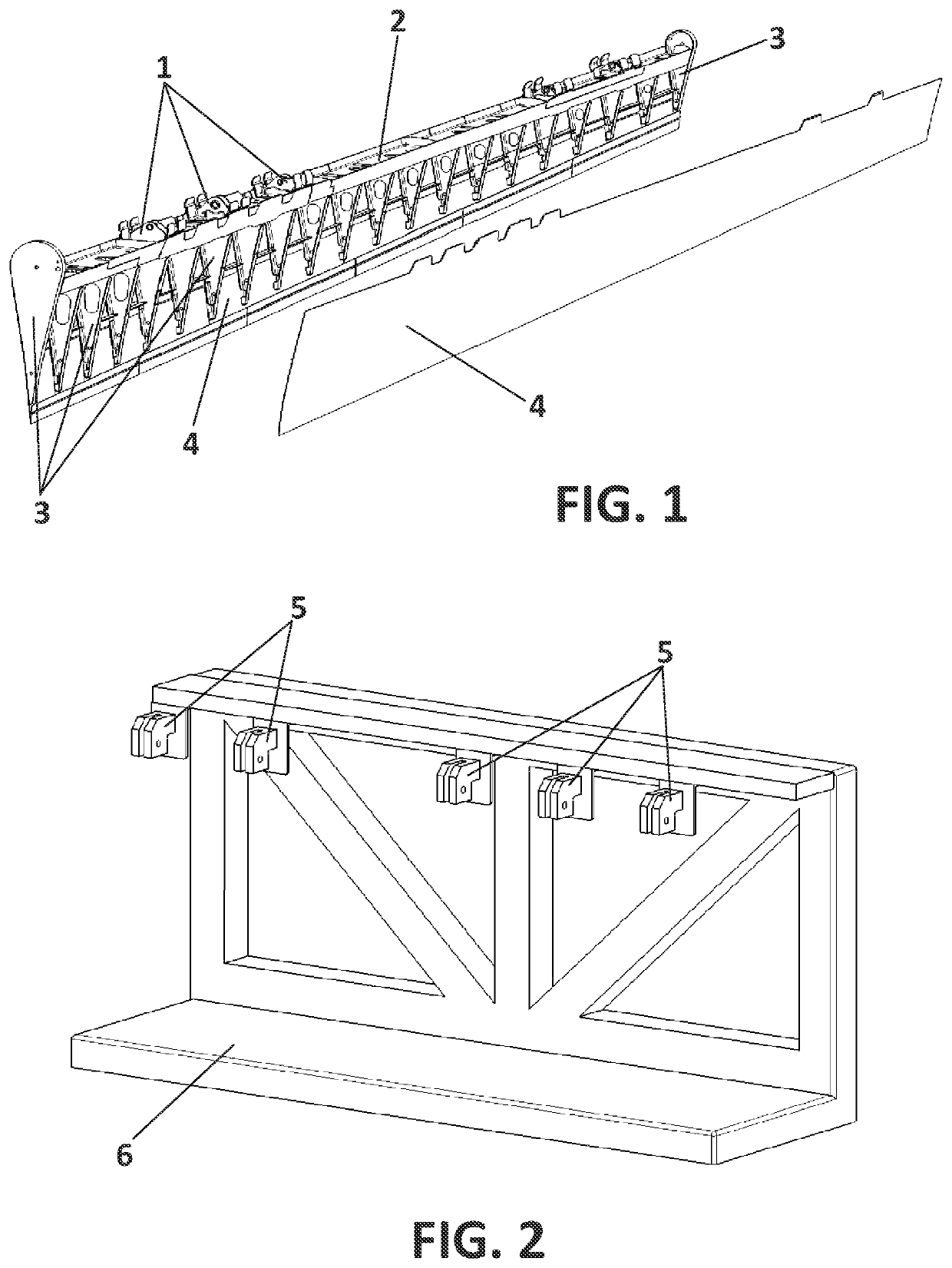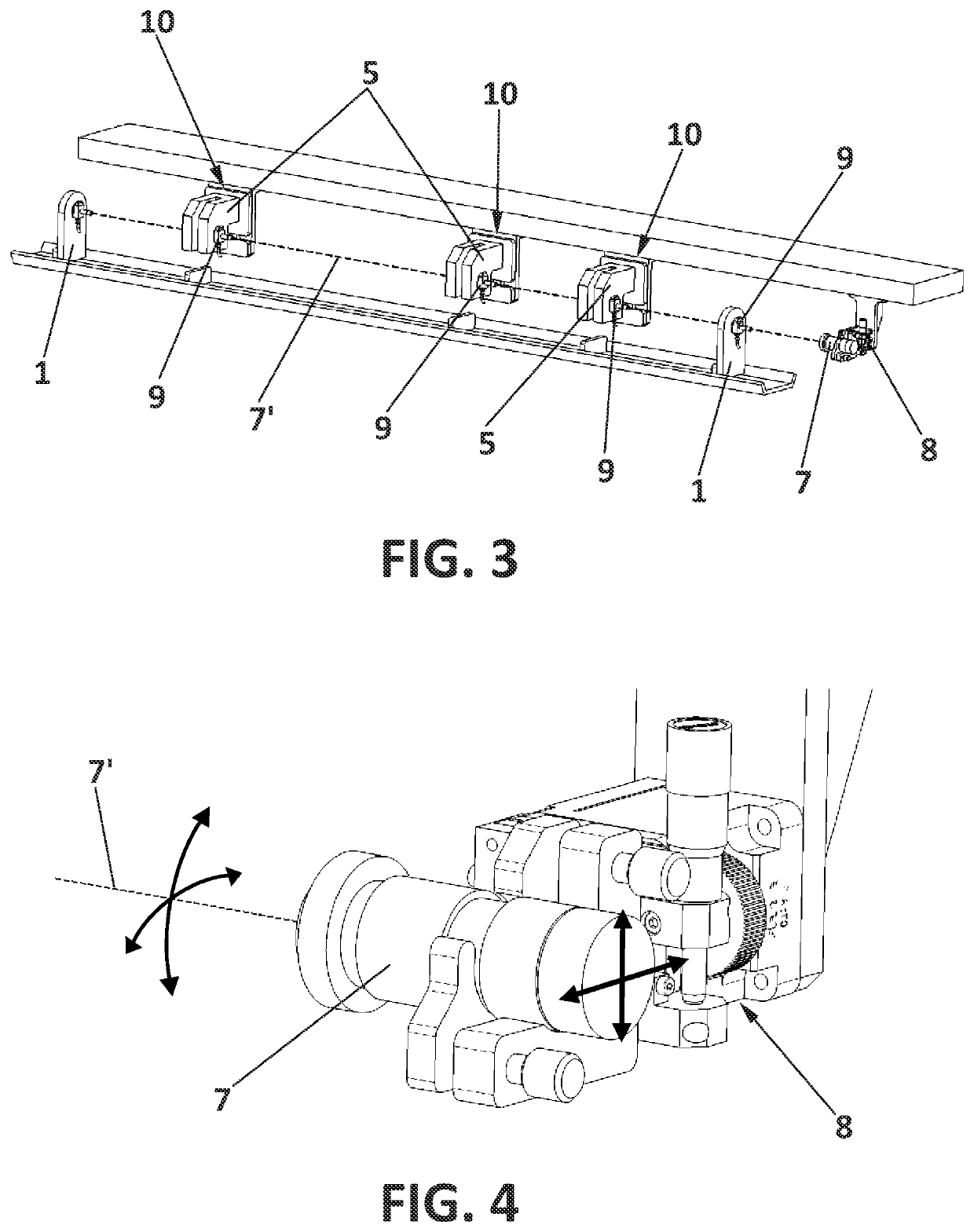Method of aligning hardpoints in aeronautical structures
- Summary
- Abstract
- Description
- Claims
- Application Information
AI Technical Summary
Benefits of technology
Problems solved by technology
Method used
Image
Examples
Embodiment Construction
[0063]In view of the mentioned drawings, and according to the numbering used, the method of assembling hardpoints in mobile aeronautical structures of the invention can be seen therein.
[0064]More specifically, a representative drawing of the aforementioned already known structures, which have a specific number of hardpoints (1) having their holes aligned with a very narrow tolerance as a requirement can be seen in FIG. 1. Specifically, said FIG. 1 shows a longeron (2), ribs (3), skins (4), and the mentioned fittings or hardpoints (1), among others.
[0065]On the other hand, as can be seen in FIG. 2, the method of the invention needs a supporting structure which allows positioning the different parts or sub-assemblies making up the structure to be assembled for the correct assembly thereof, i.e., the assembly tool of the structure at hand which comprises:[0066]positioning devices or positioning elements (5) for the hardpoints, where said positioning elements (5) allow restricting one o...
PUM
 Login to View More
Login to View More Abstract
Description
Claims
Application Information
 Login to View More
Login to View More - R&D
- Intellectual Property
- Life Sciences
- Materials
- Tech Scout
- Unparalleled Data Quality
- Higher Quality Content
- 60% Fewer Hallucinations
Browse by: Latest US Patents, China's latest patents, Technical Efficacy Thesaurus, Application Domain, Technology Topic, Popular Technical Reports.
© 2025 PatSnap. All rights reserved.Legal|Privacy policy|Modern Slavery Act Transparency Statement|Sitemap|About US| Contact US: help@patsnap.com



